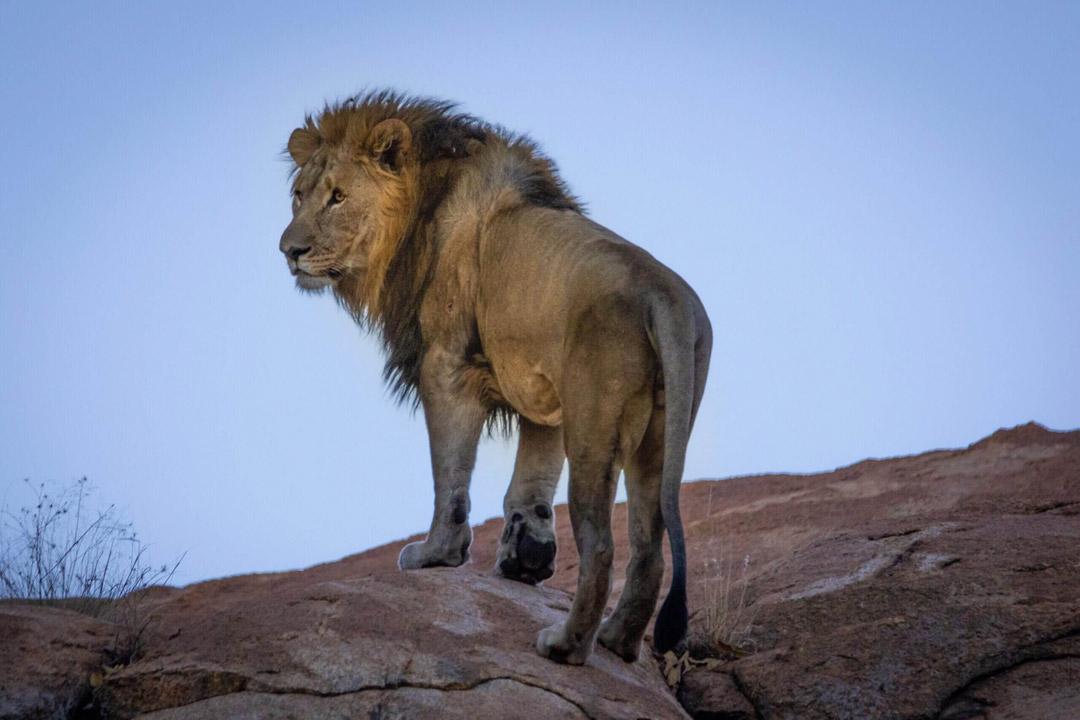Lions, often referred to as the kings of the African savanna, are not just awe-inspiring because of their size, but are also fascinating creatures with complex behaviors. As the largest of Africa’s big cats, lions capture our imaginations with their raw power, tight-knit social structures, and keen hunting instincts. Whether you are drawn to the adventure of lion hunting in Africa or fascinated by these apex predators, getting to know their habits and characteristics is essential. Understanding what makes lions such formidable creatures adds to the respect they command and can prepare you for the challenges of encountering them in the wild and the thrill of lion hunting.
Before you set off on lion hunting in Africa, it is important to delve into their world: Their behaviors, their incredible anatomy, and the way they move throughout their territories. This knowledge is not just for show; it can make all the difference in how you approach the hunting adventure, ensuring a more ethical, respectful experience and increasing your odds of success. So, whether you are a seasoned hunter or just someone fascinated by Africa’s wildlife, here are some interesting insights into what makes lions so extraordinary.
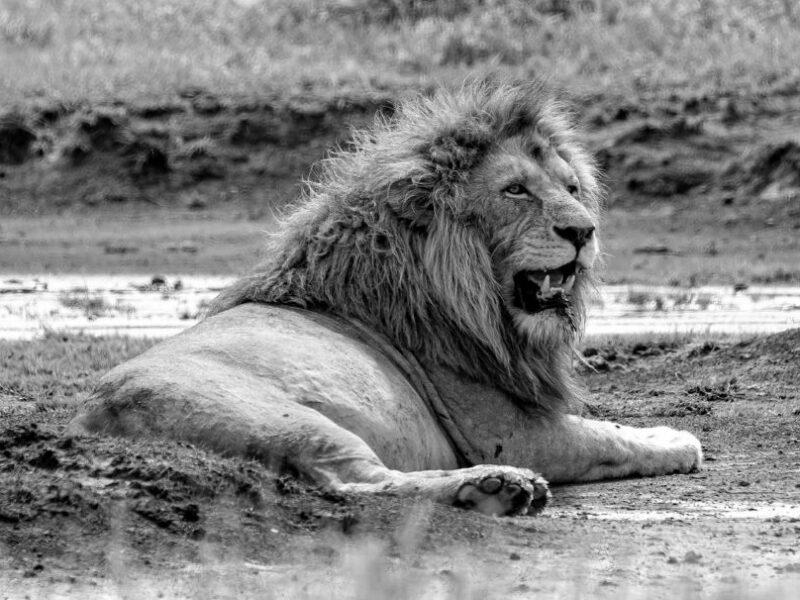
[DYNAMIC-BLOGTABLEOFCONTENT]
Key Takeaways
- The African lion is one of Africa’s most sought-after apex predators, feeding on any animal that is hunted by the formidable hunting parties or hunted solo. Favorite prey for lions include kudus, eland, zebras, and wildebeest.
- These nocturnal predators have no natural enemies and are top dog (or should we say cat!) of their ecosystems.
- Knowledge of their behavior, social structures, and hunting techniques will stand prospective hunters in good stead, with knowledge that will prepare them when lion hunting in Africa.
- Lions are highly sociable, extremely territorial mammals that will fiercely protect their pride.
- Lions have robust, muscular bodies, tipping the scales at up to 600 pounds, with lionesses, as the biggest female felines worldwide, weighing up to 400 pounds.
- Understanding lions’ anatomy, strategies, and proper shot placement can significantly enhance the experience for hunters.
The King of the Jungle – Or Savanna
Majestic Lions: Africa’s Apex Predators
Lions stand as the largest members of Africa’s big cat family. When they collaborate during hunts, they possess the strength and coordination to bring down formidable prey, including Cape buffalos, hippos, rhinos, giraffes, and even young or adult elephants. This blog delves into captivating facts about African lions, offering a comprehensive overview before exploring each point in detail.
Quick Overview: 20 Fascinating Facts About Lions
- Africa’s Largest Cats: Male lions can weigh up to 600 pounds (272 kg), making them the biggest cats on the African continent.
- Top Female Predators: Lionesses are the largest female felines in the world.
- Wild Lifespan: In the wild, males typically live around 16 years, while females can live up to 18 years.
- Pride Life: Lions are highly social, living in family groups known as prides.
- Female Strength: Lionesses are the heart of the pride, providing stability and leadership.
- Defensive of Their Turf: Lions are extremely territorial and will fiercely defend their land.
- Cubs’ Caretakers: Lionesses usually give birth to 1 to 4 cubs, raising them without male assistance.
- Hunting Experts: The females take the lead in hunting, working together to catch prey.
- Scavengers at Times: In some areas, lions rely on scavenging for nearly half of their food supply.
- Diet Diversity: Lions have a varied diet, consuming almost any animal available in their habitat.
- Feeding Order: Males usually eat first, followed by females and cubs.
- Big Sleepers: Lions are known for resting up to 20 hours a day.
- Nighttime Activity: Lions do most of their hunting after dark, as they are primarily nocturnal.
- Mane Importance: A lion’s mane signals its strength and dominance—the bigger and darker, the better.
- Extensive Habitat: Lions roam throughout much of sub-Saharan Africa, adapting to a variety of landscapes.
- Top Predators: As apex predators, lions rule their ecosystems and face no natural predators.
- Surprising Threats: Although they dominate the food chain, lions occasionally encounter danger from large animals such as buffalo and elephants.
- Versatile Habitats: Lions can adapt to different environments, from grasslands and savannas to forests and deserts.
- Part of the Big Cat Family: Lions belong to the Felidae family, sharing it with other big cats like tigers and leopards.
- Conservation Status: Classified as “Vulnerable” by the IUCN, between 23,000 and 39,000 lions are believed to remain in the wild today.
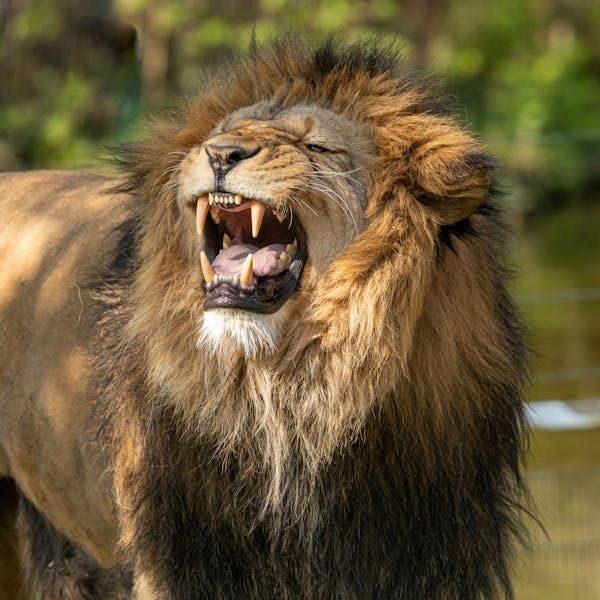
Lion Appearance and Anatomy
- Lions are a striking presence throughout sub-Saharan Africa and are a major highlight on African lion safaris. When considering lion hunting in Africa, consider that male lions generally weigh between 400 and 440 pounds (180 to 200 kg), while females, or lionesses, are smaller, typically ranging from 290 to 310 pounds (130 to 140 kg).
- However, their size can fluctuate depending on their environment and the size of their prey, with lions in areas with larger prey tend to be bigger. The heaviest recorded male lion weighed an impressive 600 pounds (272 kg), and the largest female lion reached 400 pounds (180 kg).
- Physically, lions are robust and muscular, boasting powerful legs and paws, along with sharp teeth and claws that are vital for both hunting and self-defense. Males are particularly notable for their manes, which vary in color from light orange to almost black. The mane’s size and darkness often reflect the lion’s age and health, symbolizing dominance and playing a role in attracting mates. A unique feature of lions is the tuft of hair at the end of their tails, which distinguishes them from other big cats.
- Despite their considerable bulk, lions are skilled at stealthily stalking their prey, a crucial aspect of their hunting prowess. For hunters enjoying lion hunting in Africa, understanding proper shot placement is essential for a humane and successful hunt.
Lionesses: The Largest Female Cats
Male lions are the largest felines in Africa, but lionesses hold the title of the biggest female big cats worldwide. Female lions can reach weights of up to 400 pounds (180 kg), outstripping female Siberian tigers, which top out at around 375 pounds (170 kg).
Lion Lifespan
In the wild, male lions live around 16 years, and females can reach up to 18 years. However, due to challenges like disease, predation, and human interference, the average lifespan is typically shorter at about 12 years for males and 15 years for females. In captivity, where threats are minimized, lions can live up to 30 years.
Social Structure: Pride
Lions are highly social animals, living in groups called prides, which usually consist of 10 to 20 individuals, though some prides can have up to 40 members. A pride typically includes a few males (usually 2 to 5), a larger group of related females, and their cubs. The size of a pride varies by region, with larger prides more common in eastern Africa (e.g., Serengeti National Park, Masai Mara Reserve) and smaller prides found in southern and western Africa.

Lionesses: The Pride’s Backbone
Within a pride, lionesses are the central figures. They remain with the pride for their entire lives, taking on roles such as hunting and rearing cubs. Females reach sexual maturity between 2 to 4 years old and contribute significantly to the pride’s stability and success. In contrast, males leave pride upon reaching maturity to establish their own territories and prides. When new males take over a pride, they often kill existing cubs to prompt the females to become receptive to mating, ensuring the new males can sire their own offspring.
Territorial Instincts
When considering lion hunting in Africa, it is wise to remember that these majestic beasts are fiercely territorial, with prides in maintaining and defending their territories for extended periods, sometimes spanning decades. The size of a territory depends on prey availability and access to water. Female lions collaborate to protect their territory from other prides and invading males, ensuring the safety and stability of their group.
Reproduction and Offspring
Lionesses experience a gestation period of roughly 3.5 to 4 months and usually give birth to 1 to 4 cubs, though litters of up to 6 cubs can occur. At birth, cubs are quite small and delicate, weighing between 2 to 4 pounds (1 to 2 kg) and measuring about 4 to 6 inches tall. Lionesses take on the primary role of nurturing and raising their cubs with minimal assistance from males. Once the cubs reach 2 to 4 years of age, males typically leave the pride to find their own territories and mates, while females generally remain with their original pride.
Hunting Techniques
- Lions are formidable hunters, capable of taking down a wide range of prey. Their hunting strategy relies heavily on teamwork and stealth. In a group hunt, lions coordinate to surround and isolate a target, attacking from multiple angles to increase their chances of success. This cooperative approach allows them to tackle larger and more dangerous animals, such as Cape buffalos, which are among their preferred prey.
- When hunting alone, lions utilize their strength and stealth to ambush medium-sized animals like zebras and wildebeests. Their powerful build enables them to overpower prey quickly, though they must rely on surprise rather than endurance, as their enormous size makes long chases unsustainable. Proper shot placement is vital for lion hunting in Africa, ensuring the animal is taken down quickly and humanely.
- Lions are primarily nocturnal, hunting during the cooler nighttime hours when their prey is less active. Their exceptional night vision and silent movement enable them to approach prey unnoticed, conserving energy and increasing hunting efficiency.
- Lions are more than just iconic symbols of African wildlife; they are also integral to the ecosystem as apex predators. Their behavior, hunting prowess, and social structures make them both fascinating subjects for wildlife enthusiasts and challenging targets for those embarking on lion hunting in Africa. Understanding their anatomy, strategies, and proper shot placement can significantly enhance the experience for hunters.
Scavenging Behavior
In addition to their hunting prowess, lions are also opportunistic scavengers. Depending on their location, scavenging can make up to half of their diet. Lions frequently take advantage of kills made by other predators, such as hyenas and leopards, and will feed on carcasses left behind by natural causes or human activities. This adaptability allows them to thrive even when hunting conditions are tough.
Diet Diversity
Lions have a varied diet, feeding on almost any animal available within their territory. Their preferences lean towards medium to large mammals, including:
- Zebra
- Wildebeest
- Cape Buffalo
- Oryx
- Kudu
- Impala
- Springbok
- Giraffe
- Warthog
- Waterbuck
- Sable Antelope
- Other Hoofed Mammals
In areas where larger prey is scarce, lions will also hunt smaller animals such as mice, lizards, birds, tortoises, porcupines, beetles, termites, snakes, and even crocodiles.
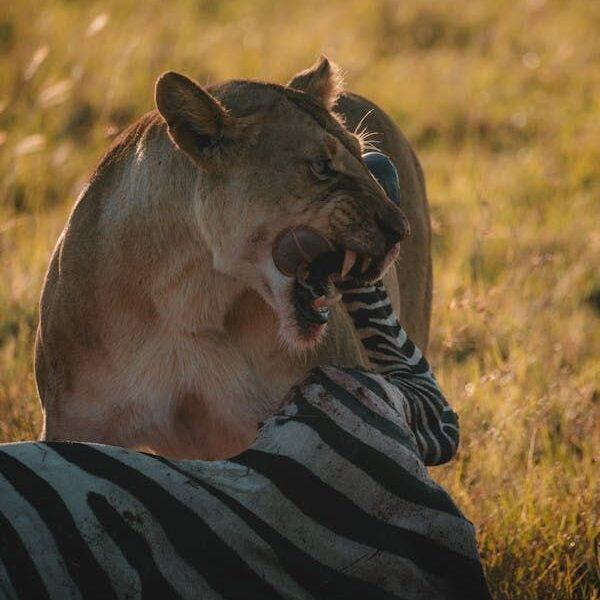
Feeding Hierarchy and Behavior
- After a successful hunt, male lions typically eat first, asserting their dominance. This hierarchy ensures that the strong males remain well-nourished to protect the pride. In cases where there is abundant food, males may allow females and cubs to eat first. Lionesses, however, prioritize feeding the cubs before themselves.
- Lions can endure several days without food, but when they do eat, they consume copious quantities—up to 20% of their body weight. For a large male lion, this can mean ingesting up to 100 pounds (50 kg) of meat in one sitting.
Extensive Resting Periods
Lions are renowned for their extensive resting periods, often sleeping or lounging for up to 20 hours a day. This behavior conserves energy for hunting, which requires significant bursts of effort. Female lions, who engage more in hunting and cub-rearing, tend to sleep slightly less than males.
Nocturnal and Crepuscular Activity
Lions are primarily nocturnal but also exhibit crepuscular behavior, being most active during twilight hours—dawn and dusk. This activity pattern provides several advantages:
- Energy Conservation: Hunting during cooler nighttime hours conserves energy compared to daytime hunts.
- Stealth: Darkness aids in approaching prey undetected.
- Predator Avoidance: Lions avoid the hottest parts of the day when other predators and scavengers are also less active.
The Mane: A Symbol of Strength and Dominance
- The mane is one of the most iconic features of male lions, symbolizing strength, health, and dominance. The size and darkness of a lion’s mane correlate with its fighting ability and reproductive success. A dark, full mane is often more attractive to females and intimidating to rivals.
- The mane also serves a practical purpose, offering some protection during fights with other males. However, it comes with trade-offs, as a large mane can make a lion more visible to prey and retain heat, which may be disadvantageous in hotter climates.
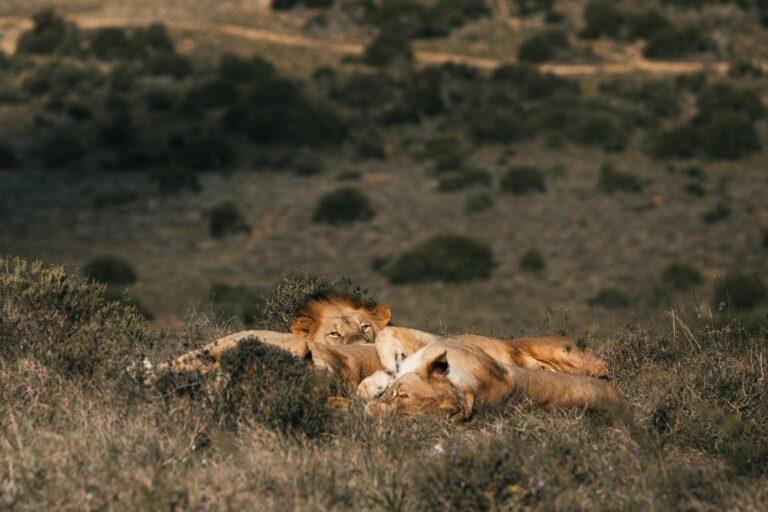
Geographic Distribution and Habitat Diversity
Lions are versatile animals that can adapt to various habitats, from savannas and grasslands to forests, shrublands, and even deserts. Their range extends across most of sub-Saharan Africa, with notable populations in:
- Serengeti National Park, Tanzania
- Masai Mara Reserve, Kenya
- Kruger National Park, South Africa
- Hwange National Park, Zimbabwe
- Okavango Delta, Botswana
Each of these regions offers unique experiences when lion hunting in Africa, from the vast open plains of the Serengeti to the dense woodlands of the Okavango Delta.
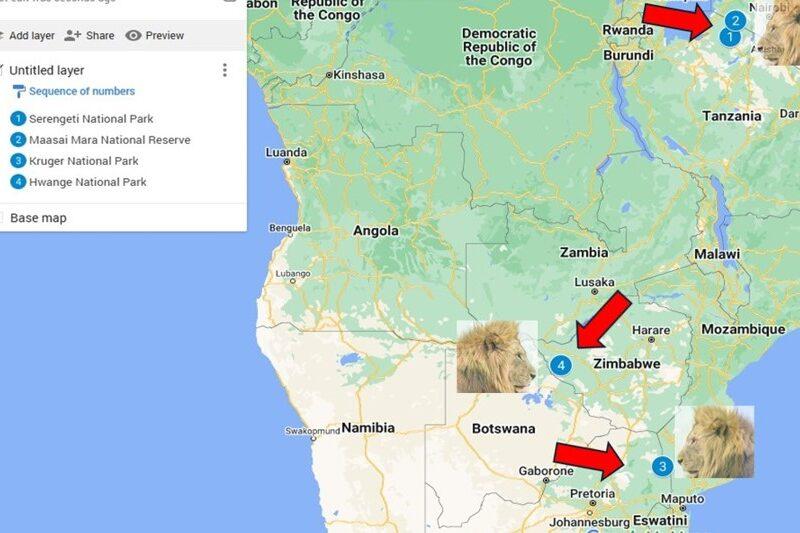
Apex Predators: Dominance at the Top
Lions, as apex predators, reign supreme at the top of the food chain with no natural predators to challenge them. Their power is upheld by their physical strength, strong social bonds, and fiercely territorial nature. Although they face dangers from human activities and environmental shifts, lions continue to be among Africa’s most powerful and respected hunters.
Natural Threats and Challenges
Despite their apex status, lions do face natural threats, primarily from large mammals such as Cape buffalos and elephants. These animals can be highly dangerous, especially when defending themselves or their young. Lions often sustain injuries or even fatalities when hunting these formidable opponents.
Conservation Status and Efforts
The lion’s conservation status is classified as “Vulnerable” by the International Union for Conservation of Nature (IUCN), with an estimated population of 23,000 to 39,000 individuals in the wild. Key threats include habitat loss, human-wildlife conflict, and poaching. Conservation efforts focus on habitat preservation, reducing human-lion conflicts, and supporting sustainable tourism that funds conservation initiatives.
Frequently Asked Questions
Are lions still hunted in Africa?
Yes, lion hunting in Africa still takes place in many countries throughout the African continent.
Where are lions found the most worldwide?
Lions are found in Africa, with sub-Saharan Africa being the most prevalent in terms of lion populations.
What is a lion’s lifespan?
Male lions generally live up to 16 years while their female counterparts have a lifespan ranging around 18 years. Various factors, including habitat, poaching, availability of prey, and human-wildlife conflict can play a role in these figures.
Conclusion
Lions hold a crucial role in Africa’s ecosystems as apex predators, and their behaviors and social dynamics provide a captivating look into the natural world. For those going lion hunting in Africa, gaining insight into these majestic creatures can greatly enrich the experience. Recognizing their importance in maintaining ecological balance highlights because conservation efforts are essential. By understanding and valuing their role, we support the preservation of their presence in the wild for future generations to enjoy.
Author: R du Toit
